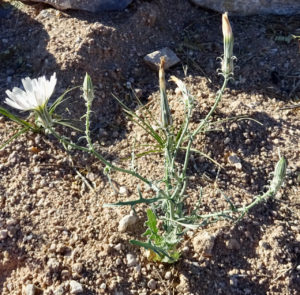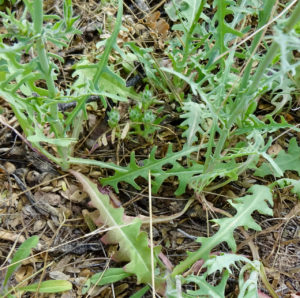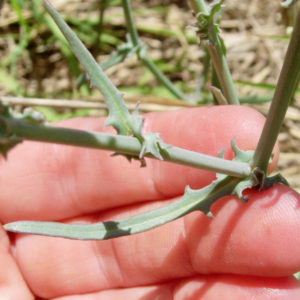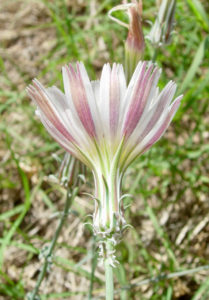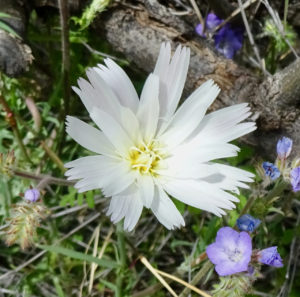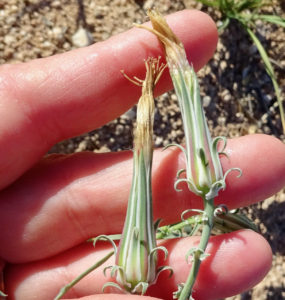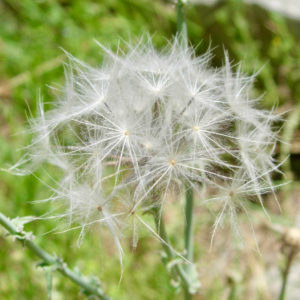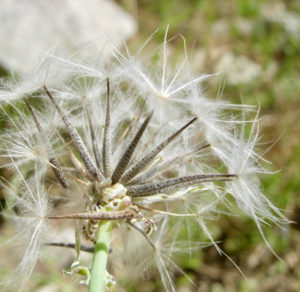Desert Chicory
Rafinesquia neomexicana
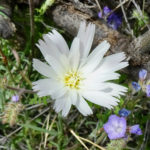
About the Plant
Desert chicory is an annual native to the desert Southwest. It can easily go unnoticed until the large, showy, white flowers appear in late spring. The seed head is also showy, with shiny white plumes at the end of each seed, giving rise to another common name for this plant: plumeseed.
Desert chicory survives on natural rainfall and reseeds each year. No care is needed other than to let the fruit mature and release seed.
Notes:
- The flowers, leaves, and seed heads of desert chicory are very similar to those of white tackstem (Calycoseris wrightii). The two can be distinguished by the presence of sticky, tack-shaped glands on the stems of white tackstem (desert chicory has smooth, glandless stems) and by the presence of small, white and green leaves that clasp the stems of desert chicory near the flower head (white tackstem leaves near the flower head do not clasp the stem). You can see photos of both glands and leaves here.
- California chicory (Rafinesquia californica) is similar to desert chicory but has smaller flowers and more westerly distribution.
Wildlife value: attracts butterflies and other small insects. Seeds may be eaten by birds.
More Information
Weekly Plant on desert chicory
Map of distribution in US (green means native and not rare; yellow means native and rare)
ID Characteristics
Desert chicory is an annual that grows to about 20 inches high. There are usually several branches from the base of the plant, each ending in a flower head.
The basal leaves of desert chicory are elongated, often 4 inches long or more, with lobes on each side.
The stems of desert chicory are round and smooth, often with a whitish cast. The leaves on the stem are smaller than the basal leaves, shorter, with fewer lobes, and often clasp the stem. The smallest stem leaves near the flower head are often marked with white.
The flower heads are found at the ends of stems. Just under the flower head there are several small bracts that look like the small leaves found on the upper stem. Their tips are often curved back toward the base of the plant and they are marked with white. Inside the bracts are several long, thin phyllaries. These are usually striped with white, green, and pink. The underside of the petals are often striped with pink.
The petals of desert chicory flowers are white and square-tipped, each with 5 lobes. The open flower head is about 1.5 inches across. If several flower heads are open at once, the plants are very showy and noticeable.
When the flowers fade, the flower head initially closes up. Click on the photo to enlarge - you can just see the bristles on the seeds in the left-most flower head.
The seed head of desert chicory will remind you of a dandelion. The seeds are elongated and dark, each ending in about 20 silvery-white bristles. The bristles are plumose, that is, they are feathery, with fine bristles on either side of the main axis. In desert chicory, these plumes are attached to the proximal 65-80% of the bristle. Click on the photo to enlarge. You can see that the end of the bristles have no plumes.
